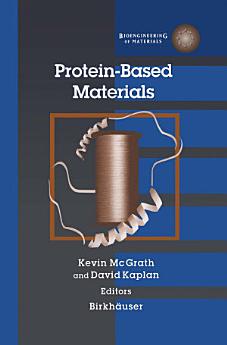Protein-Based Materials
David Kaplan · Kevin McGrath
2012년 12월 · Springer Science & Business Media
eBook
430
페이지
report검증되지 않은 평점과 리뷰입니다. 자세히 알아보기
eBook 정보
Nature learned long ago how useful proteins are as a diverse set of building blocks to make materials with very diverse properties. Spider webs, egg whites, hair follicles, and skeletal muscles are all largely protein. This book provides a glimpse into both nature's strategies for the design and produc tion of protein-based materials, and how scientists have been able to go beyond the constraints of natural materials to produce synthetic analogs with potentially wider ranges of properties. The work presented is very much the beginning of the story. Only recently has there been much progress in obtaining a molecular understanding of some of nature's com plex materials, and the mimicry or replacement of these by synthetic or genetically engineered variants is a field still in its infancy. Yet this book will serve as a useful introduction for those wishing to get started in what is sure to be an active and productive field throughout the 21st century. The authors represent a wide range of interests and expertise, and the topics chosen are comprehensive. Charles R. Cantor Center for Advanced Biotechnology Boston University Series Preface The properties of materials depend on the nature of the macromolecules, small molecules and inorganic components and the interfaces and interac tions between them. Polymer chemistry and physics, and inorganic phase structure and density are major factors that influence the performance of materials.
이 eBook 평가
의견을 알려주세요.
읽기 정보
스마트폰 및 태블릿
노트북 및 컴퓨터
컴퓨터의 웹브라우저를 사용하여 Google Play에서 구매한 오디오북을 들을 수 있습니다.
eReader 및 기타 기기
Kobo eReader 등의 eBook 리더기에서 읽으려면 파일을 다운로드하여 기기로 전송해야 합니다. 지원되는 eBook 리더기로 파일을 전송하려면 고객센터에서 자세한 안내를 따르세요.






